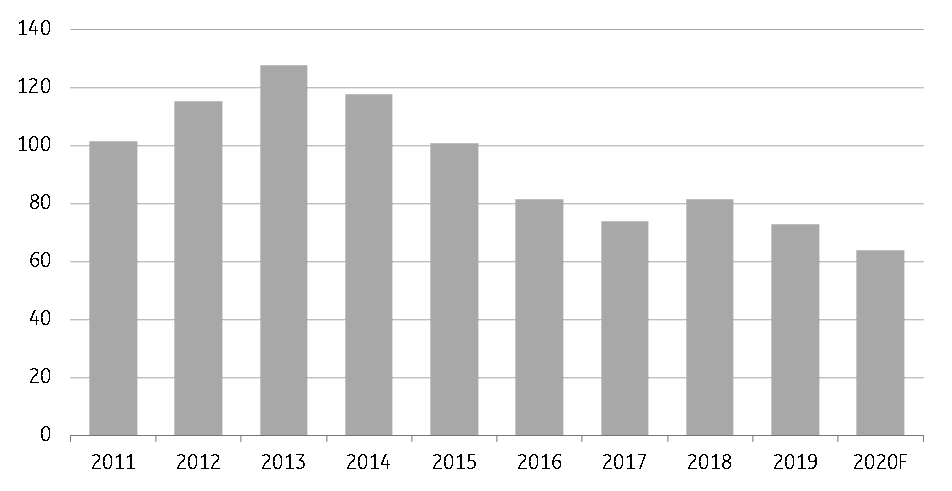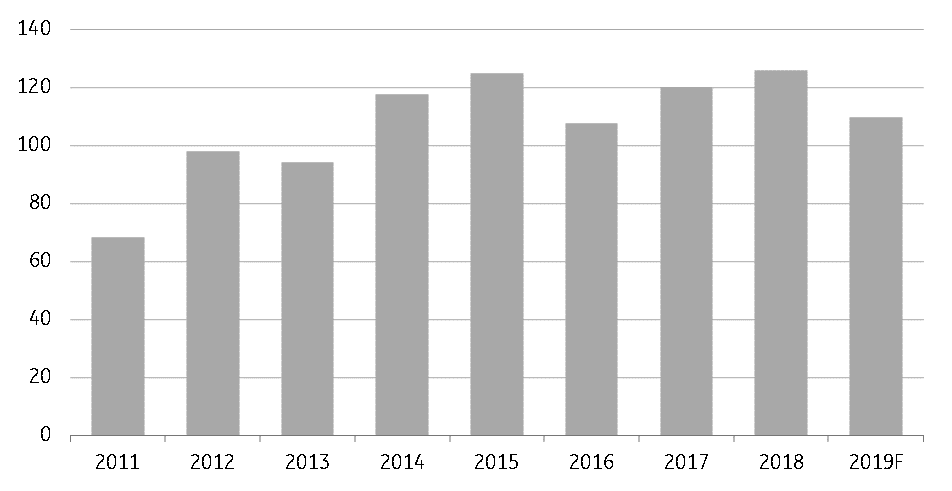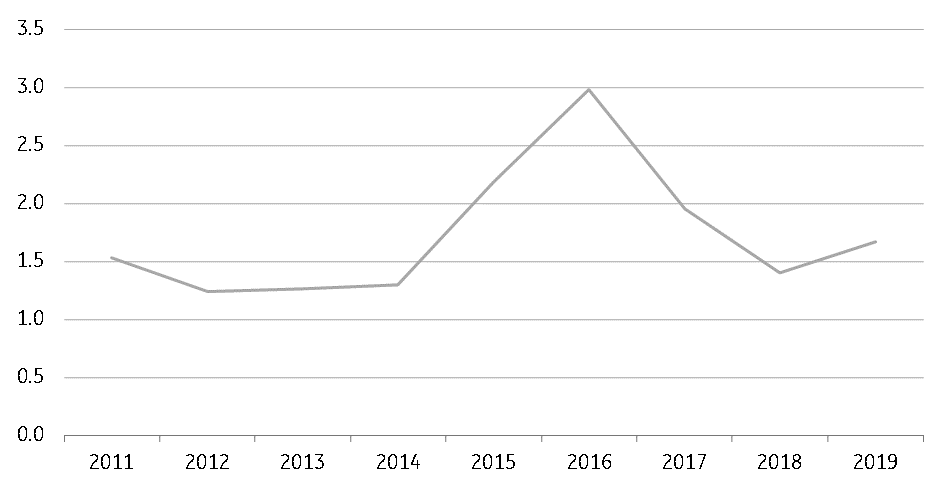European oil & gas majors take action
Already suffering from oversupply, the Covid-19 outbreak is pushing the energy sector to revise its business plans for 2020
Bearish oil fundamentals prompt major rethink
At the start of the year, the International Energy Agency (IEA) was expecting that oil demand over 2020 would grow by 1.2MMbbls/d. Clearly, the spread of Covid-19 and the resulting country shutdowns and travel restrictions have changed that projection, with oil demand now expected to contract over 2020. What's less clear is precisely how much demand destruction could be seen, but we are assuming it's something in the region of a 2MMbbls/d year-on-year decline. The demand hit is weighing heavily on oil prices, and European oil & gas majors are responding to the situation by cancelling share buybacks and reducing capital expenditure. These actions, combined with the companies’ robust liquidity and leverage positions should limit the extent of negative credit rating actions.
On top of the demand hit due to the Covid-19 pandemic, we also saw a collapse in the OPEC+ deal, which has seen a price war break out between Saudi Arabia and Russia. As a result, both countries plan to increase output from April onwards, which will only increase an already significant surplus over the second quarter of this year. Russia appears to have the advantage in terms of fiscal breakeven levels, with the Russians needing a little over US$40/bbl to balance their budget, whilst Saudi Arabia needs a price in the region of US$80/bbl. However, it is the Saudis who have more room to increase output and gain market share, with the Kingdom having a sustainable production capacity of 12MMbbls/d, which is around 2.3MMbbls/d above their February production levels. Russia could potentially increase output in the region of 200-300Mbbls/d in the near term.
In the absence of an emergency OPEC meeting, the market will likely have to wait until the scheduled OPEC meeting in June for some sort of action, which would be too late to deal with the surplus expected over the second quarter. We recently revised lower our oil forecasts, and now expect ICE Brent to average US$20/bbl over 2Q20, versus our previous forecast of US$33/bbl for the quarter.
ING oil price forecasts

Capital expenditure reduced
With most European oil & gas majors displaying an average oil breakeven price around US$40/bbl, the need to review business plans for 2020 has become a requisite for most of them. Our peer group, composed of Royal Dutch Shell, Total SA, BP, ENI, Equinor and Repsol, shows that capital expenditure will continue its descent in 2020.
On an aggregate basis, the top European oil & gas majors have announced an average 18% cut in investments for 2020. According to recent statements, we estimate the peer group capex spending at c.US$64 billion in 2020 compared with c.US$78 billion in 2019. Some of these players have announced that they envisage further cuts in 2021. Capital expenditure in 2020 might be reduced further in our view, although the sector's flexibility is limited due to projects already underway which cannot be stopped swiftly.
The oil crisis in 2014-2016 shows that investment reductions tend to be spread over the crisis years and with a certain delay. Plunging oil prices in the period 2014-2016, with a severe dip at the beginning of 2016, pushed oil & gas majors to review their expansion strategy and more importantly their capex and opex efficiencies. As a result, this new crisis sees the Energy sector in a better position this time around with the experience gained a few years ago.
Top 5 European oil & gas’ investment in US$bn 2011-2020F

Liquidity and leverage relatively robust
On aggregate, Royal Dutch Shell, Total SA, BP, ENI, Equinor and Repsol have strong liquidity with c.$109bn of cash & cash equivalents on their balance sheets as of end 2019. The peer group’s net leverage (net adjusted debt/EBITDA) has seen a small upward peak in 2019, with oil and gas prices already showing some weakness. With an average net adjusted debt/EBITDA at 1.67x in 2019, the European oil & gas majors’ leverage still offers some buffer. In 2016, leverage tipped at 3x. Depending on the depth and length of this crisis, leverage may surge to 2016 levels or even beyond.
In 2016, the peer group’s deterioration in credit ratios had resulted in a mere one notch downgrade, proving the top European oil & gas majors’ resilience and ability to take action during critical times.
European oil & gas majors' total liquidity (US$bn)

European oil & gas majors’ net leverage (x)

This publication has been prepared by ING solely for information purposes irrespective of a particular user's means, financial situation or investment objectives. The information does not constitute investment recommendation, and nor is it investment, legal or tax advice or an offer or solicitation to purchase or sell any financial instrument. Read more
Download
Download article
